Below are sample pages from the Gazetteer.
As you read this book, you will find:
Places you may remember.
Places you did not know existed.
Historical points of interest.
Places you have been.
Places your grandparents told you about.
a Gazetteer
What is in it?
A Gazetteer – an index of Geographical terms.
A Landmark – a prominent feature of the landscape.
Natural Areas or features – areas or objects here before European settlement; a part of the landscape neither created nor drastically disturbed by human activity.
Cultural areas or features – areas or objects created by, or drastically disturbed by, human activity.
This Gazetteer lists, locates, and describes sites in Johnson County that have natural area names. These names were found on old maps and in historical documents and old publications, or they are names still used by older residents.
“It has been the common practice of settlers in the United States to name places where they live. These names often indicate important features of the landscape, and the selection of names often reveals the knowledge people have of their environment.” W. E. McClain.
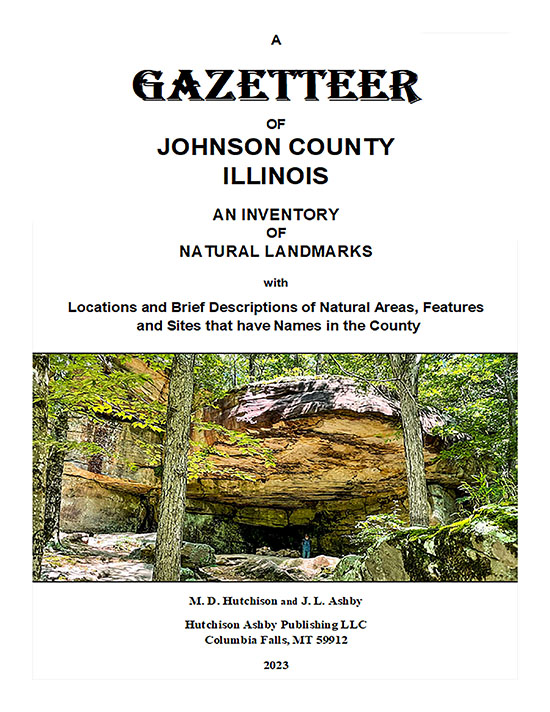

Page 27
Site Names, Photographs and Text . . .
The site names are listed throughout the Gazetteer in alphabetical order. Maps show the location of the Site plus they often show other sites in the area. Photographs in this book range from the 1960s and 1970s to ones taken recently. They generally show the character of the sites. The text gives information about the each site and explains where the name of the site came from.
Names in parenthesis after the listed site may reference another site of interest, or may be another name for this site or a site that is closely associated with it.
Page 78
Sites with the Same Name in Different Locations . . .
Several sites in Johnson County have the same name. An example is “Cedar Bluff.” Cedar Bluff (Goreville), Cedar Bluff (Tunnel Hill) and Cedar Bluff (White Hill). The “town” or area name in parenthesis is to differentiate sites with duplicate names.
Quotations are often included in the information about a site. The quotations are from old documents or from recent conversations with people that were familiar with the sites.
Words enclosed in brackets are statements we have included for clarification.

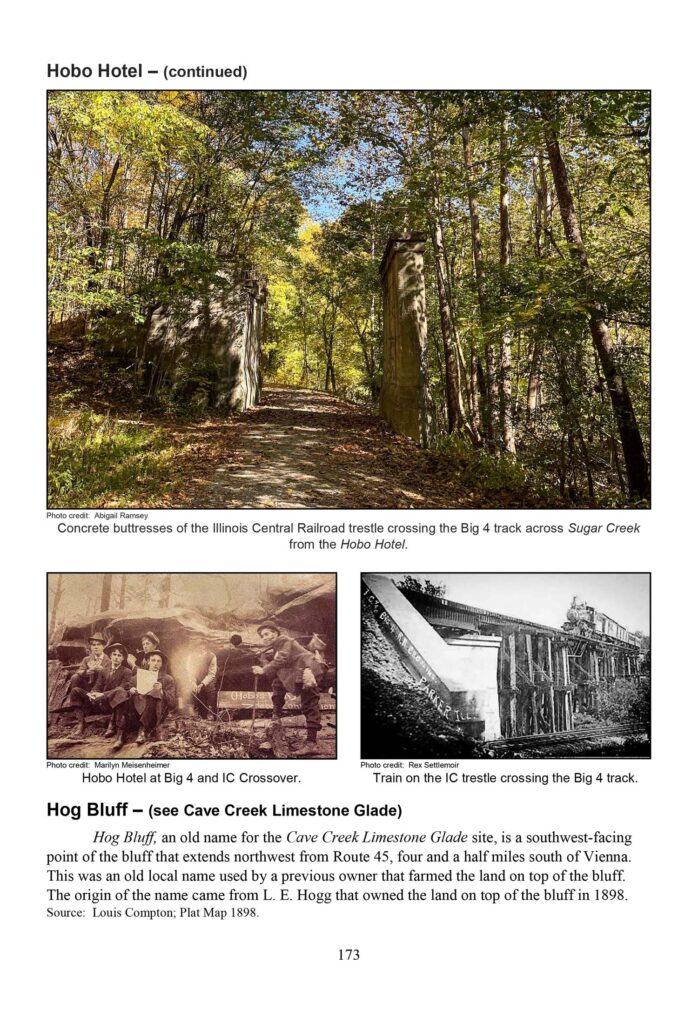
Page 173
Sites Yesterday and Today . . .
Photographs like this one of the concrete buttresses of the old Big Four Railroad where the old IC Railroad crossed over it (now the Tunnel Hill Bike Trail) show what the site is like today. The two photographs at the bottom give historical reference. Photographs of events or views of sites from years ago have been supplied for historical reference. We have great appreciation for these historical images, as much of the information about these sites has been lost and forgotten.
Page 213
Unusual Things in Usual Places . . .
Lowery Bluff is another interesting place with unusual features. The steps make it easier to climb and are thought to have been made by people in ancient times. When? How were they made? Why was this an important place to climb the bluff? One question brings up another.
Would the Brown/Lowery Plateau have made a great place for an Indian camp? Surrounded on all sides by steep slopes and bluffs, it would have possibly been an excellent place to grow their crops of corn and squash among other vegetables. This walkway led down to the Little Black Slough where fish and game were often plentiful.
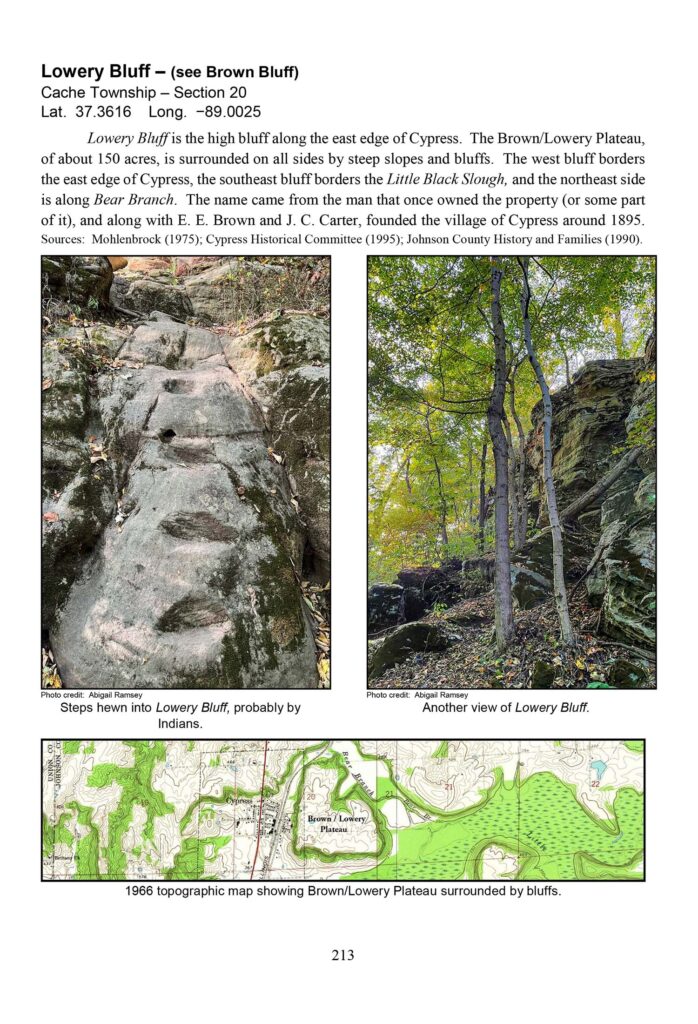
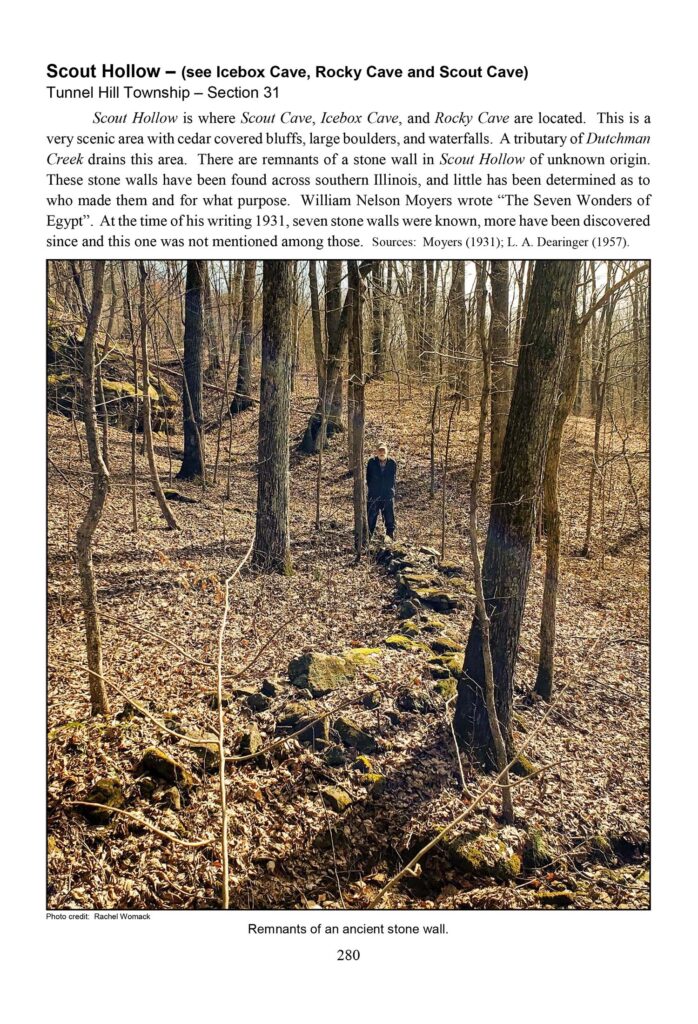
Page 280
Rare Things Found . . .
While photographing Scout Cave, M. D. Hutchison ran across the remains of an ancient stone wall in the Scout Hollow. There are a number of stone walls found in southern Illinois and surrounding states. Did this one connect to the bluff (visible at the upper left)? Was it originally about 6 feet high by 6 feet wide like many of the others? Why was it built? By whom? So many questions, so few answers.
Page 317
Southern Illinois history is being lost every day . . .
Few people living today know of the history of The Sawmill Pond. This site, like many others, will soon be forgotten. The interesting history of these places needs to be documented in a form that can be kept and passed down through the generations.
It has been said by many:
“Without a history, we have no future”.
If we don’t know where we came from, how do we know where we are going?
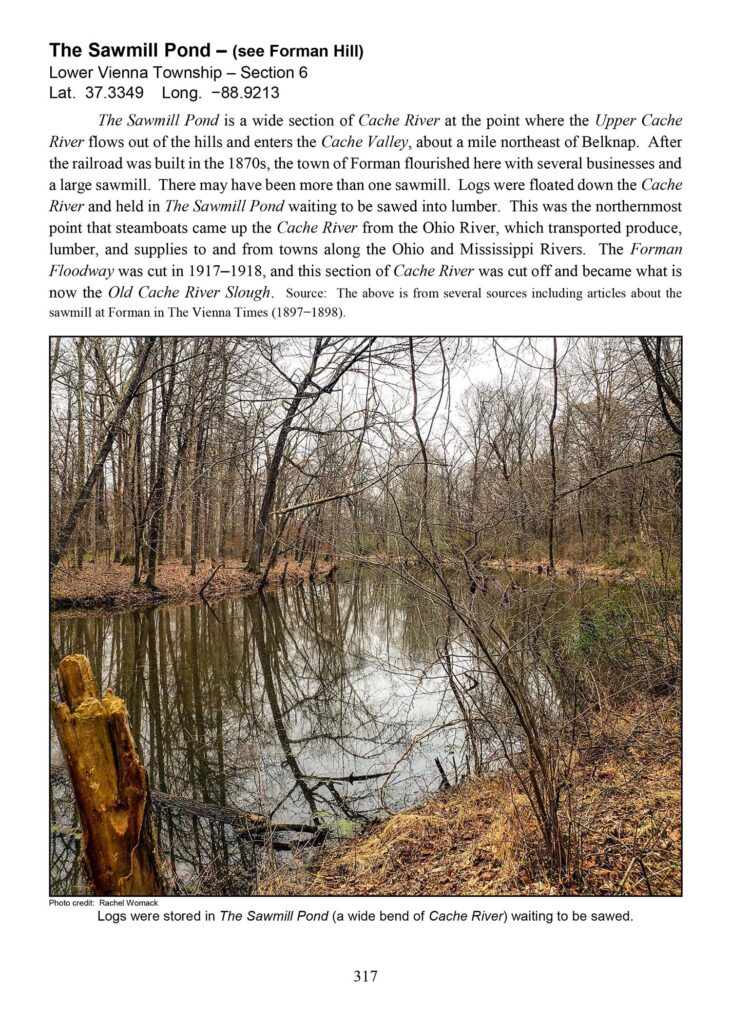
Hutchison Ashby Publishing LLC
410 Lynnewood Drive
Columbia Falls, Montana 59912
406-897-0960